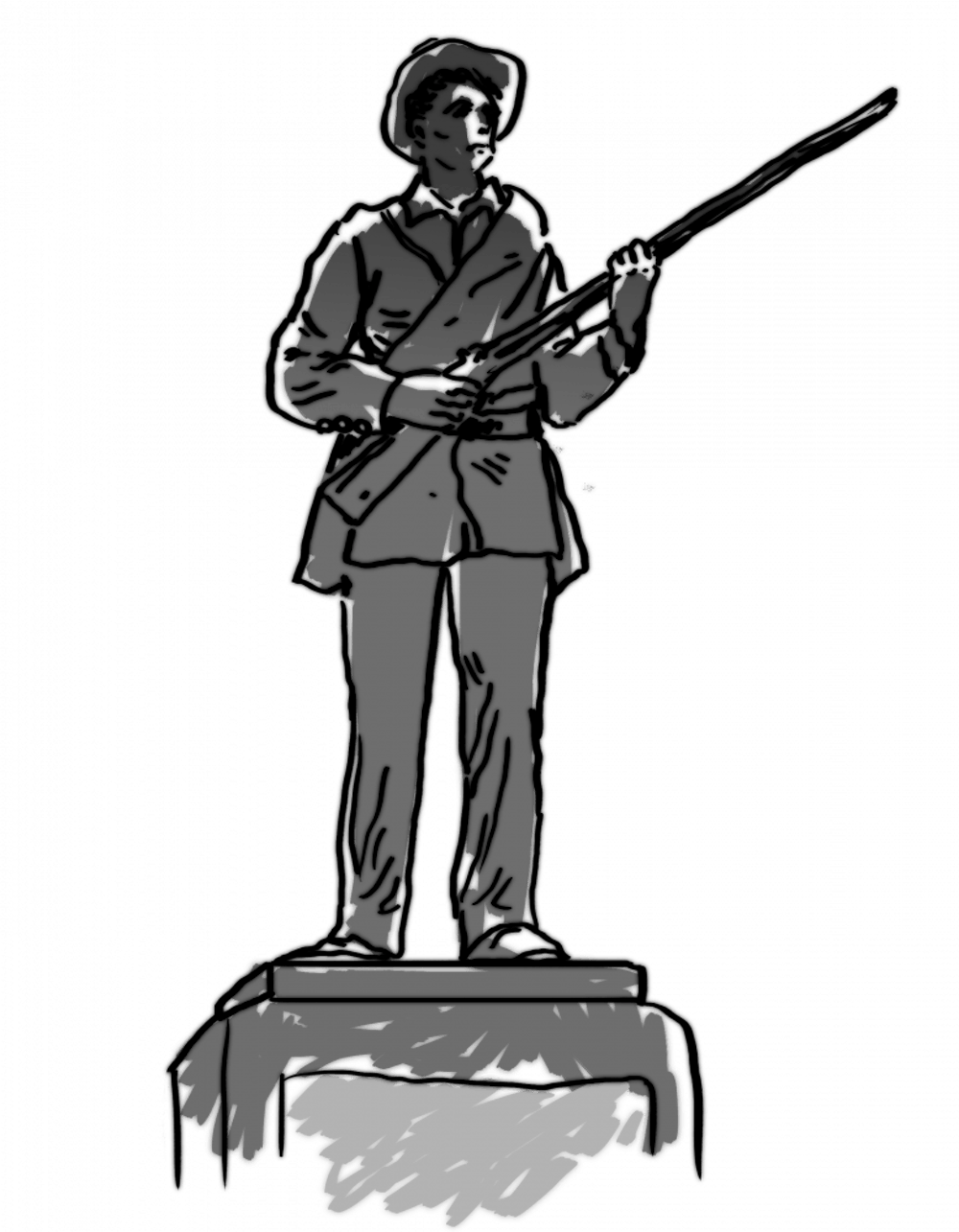The hypervisibility of the issue of Silent Sam has engaged our community in a rather binary dialogue: Should Sam stay or fall?
This conversation is nothing new.
Silent Sam has long been a focal point and gathering place for the University in times of racial unrest.
Following the assassination of Dr. Martin Luther King, Jr., Sam was vandalized and scrubbed clean by student volunteers who decorated it with small Confederate flags. On Nov. 19, 1971, the Black Student Movement and the Afro-American Society of Chapel Hill High School held a protest at Sam’s feet in memory of James Cate, a young black man murdered in the Pit by members of a white motorcycle gang.
In Julian Carr’s infamous speech at the dedication of Silent Sam, he fondly recalled publicly horsewhipping a “negro wench” and praised the Confederate army for saving “the very life of the Anglo-Saxon race in the South.”
Clearly, the people who initially favored the monument were promoting a narrative of white supremacy. Whether the statues’ current proponents hold similar views or not, its continued presence on our campus empowers those who do.
And regardless of racist implications, North Carolina law will keep the monument in place. Therefore, efforts in actualizing change need to target the players with the real power in their decision-making, like the UNC Board of Trustees and the North Carolina General Assembly.
The BOT placed a 16-year moratorium on renaming buildings after changing the name of Saunders Hall to Carolina Hall — a decision reached by mounting pressure from student-led activism. Returning the Carolina community its power to self-title its buildings would be a significant show of solidarity and progress.
The statue was commissioned for the present-day value of $185,443.94 — a sum that alumni could pledge to fundraise (or withhold) for its removal or relocation as a message to the administration in the language it best understands.



